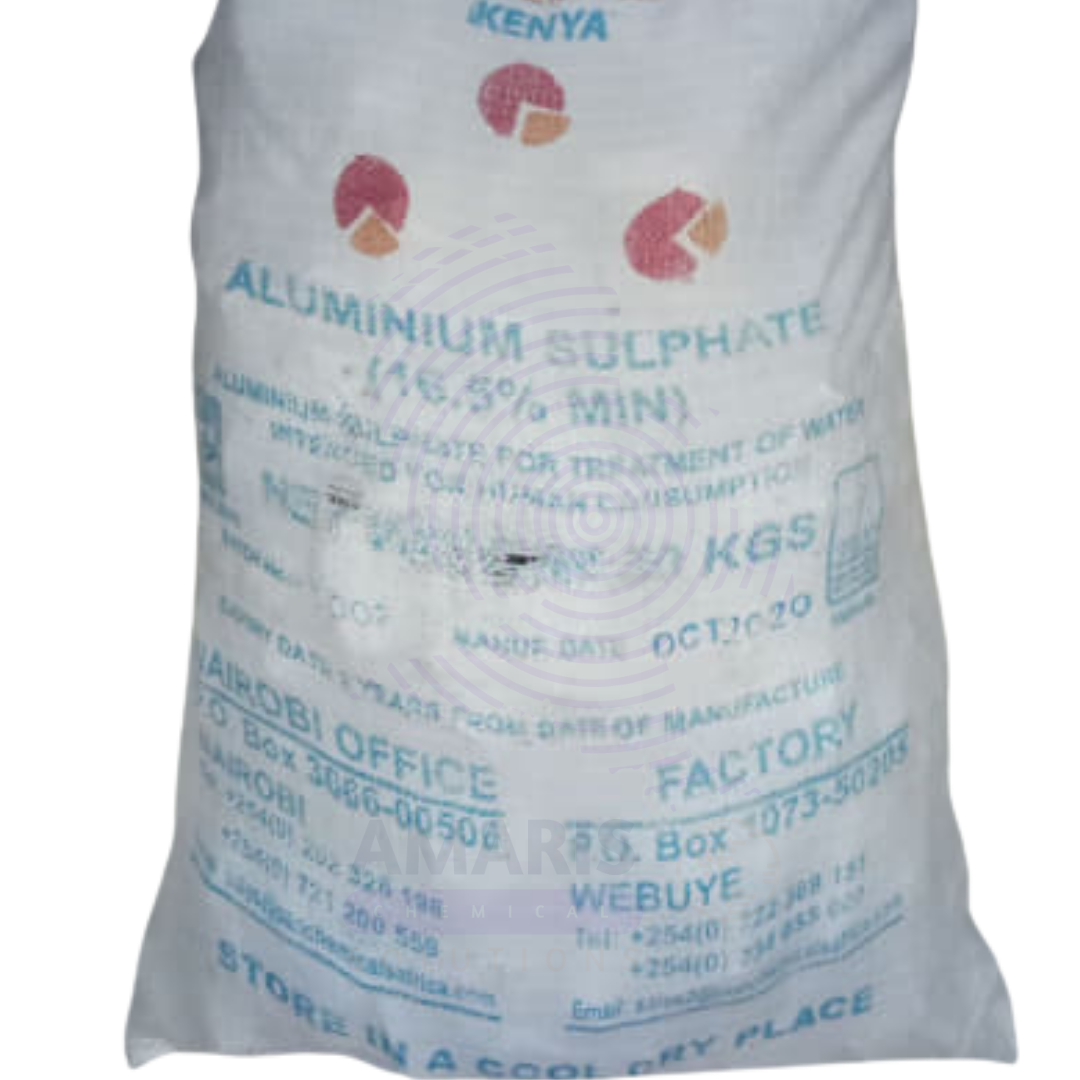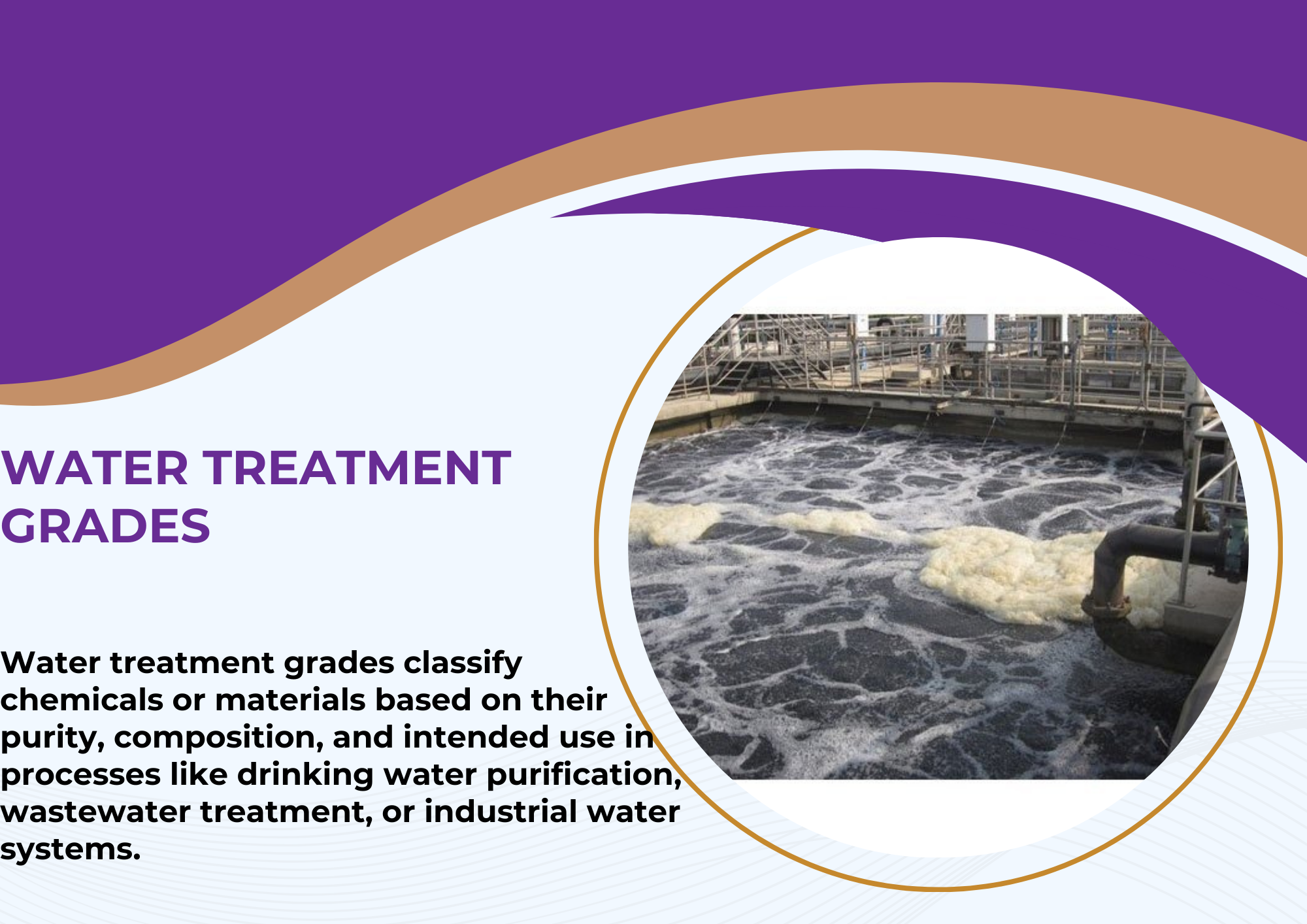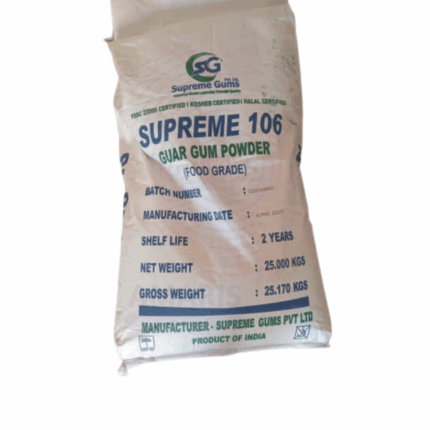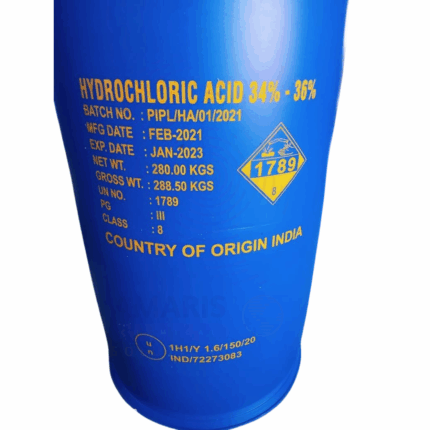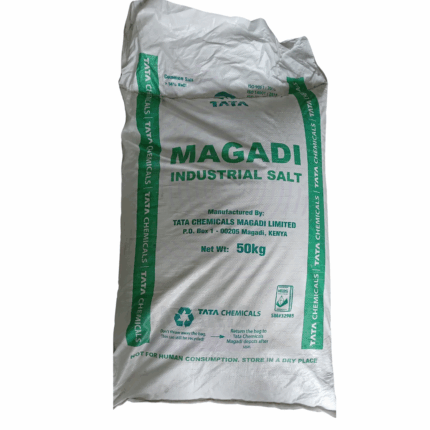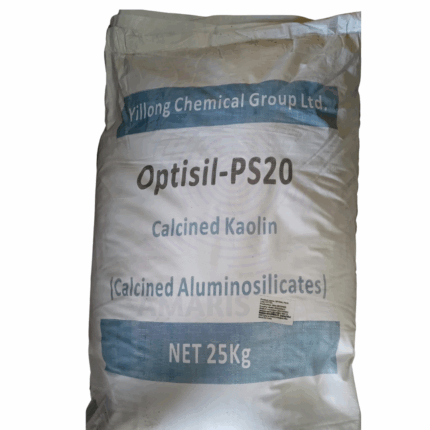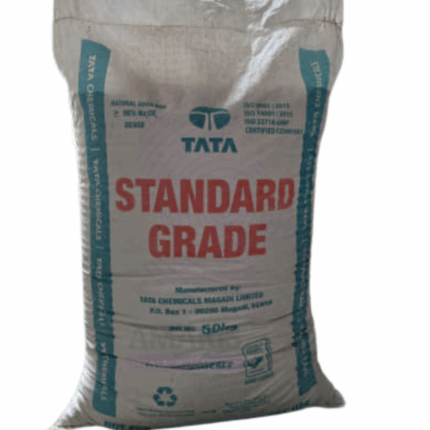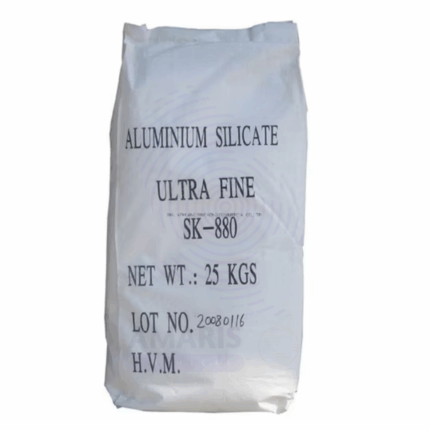
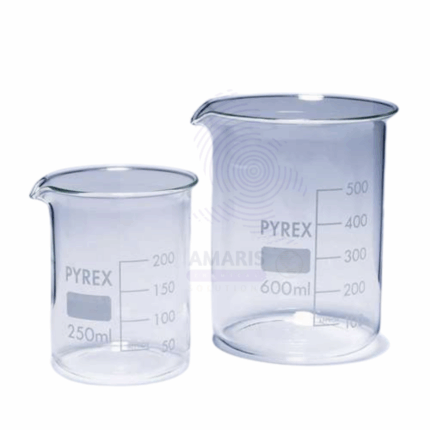
Aluminium Sulphate Alum Rock
$ 0.20
Aluminium Sulphate Alum Rock, commonly referred to as simply Aluminum Sulphate or Alum Rock, is a white crystalline solid widely used across various industries. It is primarily known for its strong coagulating properties, making it essential in water purification, wastewater treatment, and paper manufacturing. When dissolved in water, it reacts to form aluminum hydroxide, which binds with impurities and suspended particles, facilitating their removal. In addition, alum rock finds applications in dyeing, tanning, and as a mordant in textile industries. It has astringent and antiseptic properties, making it useful in cosmetics and personal care products such as deodorants and styptic pencils. Its cost-effectiveness and multifunctionality make it a staple chemical in environmental, industrial, and consumer sectors.
Aluminium Sulphate Alum Rock
Primary Uses
- Water Treatment
- Used as a coagulant and flocculant to purify drinking water and treat wastewater by aggregating suspended solids and impurities for easier filtration.
- Removes turbidity, color, and microorganisms from water supplies ensuring safe potable water.
- Paper Industry
- Employed in paper manufacturing to control the pH and improve the sizing, brightness, and strength of paper products.
- Helps in fixing dyes and pigments during the paper-making process.
- Textile Industry
- Functions as a mordant in dyeing to fix dyes on fabrics, enhancing color fastness and vibrancy.
- Used in the tanning process for leather manufacturing.
- Cosmetics & Personal Care
- Utilized in deodorants and styptic pencils for its astringent and antiseptic properties.
- Sometimes included in aftershave products to reduce irritation.
Secondary Uses
- Gardening & Agriculture
- Applied to adjust soil pH and as a fertilizer additive supplying aluminum and sulfate ions.
- Used in some herbicides and fungicides formulations.
- Fire Retardants
- Occasionally used in fireproofing mixtures due to its water-releasing properties upon heating.
- Food Processing
- Occasionally used as a firming agent and acidity regulator in some food products, although less common today due to regulatory limits.
- Construction
- Added to cement mixtures to improve setting times and reduce bleeding.
1. Basic Identification Attributes
- Chemical Name (IUPAC): Aluminum sulfate
- Common/Trade Names: Aluminum Sulphate, Alum Rock, Papermaker’s Alum
- CAS Number: 10043-01-3
- HS Code: 2833.11.00
- Molecular Formula: Al₂(SO₄)₃·nH₂O (typically hexahydrate form)
- Synonyms: Alum, Papermaker’s Alum, Alums
2. Physical & Chemical Properties
- Physical State: White crystalline solid or granular powder
- Color & Odor: White, odorless
- Melting Point: Decomposes at 770°C (loses water and breaks down)
- Boiling Point: N/A (decomposes before boiling)
- Density: ~1.62 g/cm³ (hexahydrate)
- Solubility: Highly soluble in water; insoluble in ethanol and organic solvents
- pH Level: Acidic solution (~3 when dissolved in water)
- Vapor Pressure: Negligible
- Flash Point: Non-flammable
- Autoignition Temperature: N/A
3. Safety & Hazard Attributes
- Hazard Class (GHS): Classified as irritant; causes skin and eye irritation
- NFPA Ratings: Health 2, Flammability 0, Reactivity 0
- Exposure Limits: OSHA PEL = 10 mg/m³ (total dust), ACGIH TLV = 2 mg/m³ (respirable dust)
- Reactivity: Stable under normal conditions; reacts with strong bases and generates heat when dissolved in water
- Incompatibilities: Strong bases, alkalis, and strong reducing agents
4. Storage & Handling Attributes
- Storage Conditions: Store in a cool, dry, well-ventilated area away from moisture and incompatible materials
- Container Type: Sealed plastic or coated metal drums or bags
- Shelf Life: Typically 2-3 years if kept dry and sealed
- Special Handling: Avoid dust inhalation and contact with skin and eyes; use PPE (gloves, goggles, dust mask)
5. Regulatory & Compliance Attributes
- Regulatory Status: Approved for use in water treatment and various industrial applications; food use regulated
- Transportation: Not classified as hazardous for transport under most regulations
- Waste Disposal: Dispose of in accordance with local environmental and safety regulations
6. Environmental & Health Impact
- Ecotoxicity: Toxic to aquatic organisms at high concentrations; care must be taken to avoid environmental contamination
- Persistence: Breaks down in environment to release sulfate and aluminum ions
- Carcinogenicity: Not classified as carcinogenic by IARC or OSHA
- Biodegradability: Inorganic compound, not biodegradable but undergoes natural dissociation
Safety Handling Precautions
- PPE: Use gloves, dust masks, and eye protection to prevent irritation and inhalation of dust.
- Handling: Minimize dust generation; work in well-ventilated areas.
- Storage: Keep containers tightly closed and dry; avoid moisture contact.
- Hygiene: Wash hands after handling; avoid eating, drinking, or smoking during use.
First Aid Measures
- Inhalation: Move to fresh air; seek medical attention if breathing difficulties occur.
- Skin Contact: Wash thoroughly with soap and water; seek medical advice if irritation develops.
- Eye Contact: Rinse eyes with water for at least 15 minutes; consult a physician if irritation persists.
- Ingestion: Rinse mouth with water; do NOT induce vomiting; seek immediate medical attention.
Firefighting Measures
- Fire Hazards: Non-flammable; does not support combustion but may decompose at very high temperatures.
- Extinguishing Media: Use water spray, foam, dry chemical, or CO₂ for surrounding fires.
- Special Precautions: No specific hazardous decomposition products expected under fire conditions.
- Firefighters: Use standard protective gear.


 Preservatives(food)
Preservatives(food) Flavor Enhancers
Flavor Enhancers Acidulants
Acidulants Sweeteners
Sweeteners Antioxidants
Antioxidants Colorants(food)
Colorants(food) Nutraceutical Ingredients (food)
Nutraceutical Ingredients (food) Nutrient Supplements
Nutrient Supplements Emulsifiers
Emulsifiers
 Collectors
Collectors Dust Suppressants
Dust Suppressants Explosives and Blasting Agents
Explosives and Blasting Agents Flocculants and Coagulants
Flocculants and Coagulants Frothers
Frothers Leaching Agents
Leaching Agents pH Modifiers
pH Modifiers Precious Metal Extraction Agents
Precious Metal Extraction Agents
 Antioxidants(plastic)
Antioxidants(plastic) Colorants (Pigments, Dyes)
Colorants (Pigments, Dyes) Fillers and Reinforcements
Fillers and Reinforcements Flame Retardants
Flame Retardants Monomers
Monomers Plasticizers
Plasticizers Polymerization Initiators
Polymerization Initiators Stabilizers (UV, Heat)
Stabilizers (UV, Heat)
 Antifoaming Agents
Antifoaming Agents Chelating Agents
Chelating Agents Coagulants and Flocculants
Coagulants and Flocculants Corrosion Inhibitors
Corrosion Inhibitors Disinfectants and Biocides
Disinfectants and Biocides Oxidizing Agents
Oxidizing Agents pH Adjusters
pH Adjusters Scale Inhibitors( water)
Scale Inhibitors( water)
 Antioxidants(cosmetic)
Antioxidants(cosmetic) Emollients
Emollients Fragrances and Essential Oils
Fragrances and Essential Oils Humectants
Humectants Preservatives
Preservatives Surfactants(cosmetic)
Surfactants(cosmetic) Thickeners
Thickeners UV Filters
UV Filters
 Fertilizers
Fertilizers Soil Conditioners
Soil Conditioners Plant Growth Regulators
Plant Growth Regulators Animal Feed Additives
Animal Feed Additives Biostimulants
Biostimulants Pesticides (Herbicides, Insecticides, Fungicides)
Pesticides (Herbicides, Insecticides, Fungicides)
 Active Pharmaceutical Ingredients (APIs)
Active Pharmaceutical Ingredients (APIs) Excipients
Excipients Solvents(pharmaceutical)
Solvents(pharmaceutical) Antibiotics
Antibiotics Antiseptics and Disinfectants
Antiseptics and Disinfectants Vaccine Adjuvants
Vaccine Adjuvants Nutraceutical Ingredients (pharmaceutical)
Nutraceutical Ingredients (pharmaceutical) Analgesics & Antipyretics
Analgesics & Antipyretics
 Analytical Reagents
Analytical Reagents Solvents(lab)
Solvents(lab) Chromatography Chemicals
Chromatography Chemicals Spectroscopy Reagents
Spectroscopy Reagents microbiology-and-cell-culture-reagents
microbiology-and-cell-culture-reagents Molecular Biology Reagents
Molecular Biology Reagents Biochemical Reagents
Biochemical Reagents Inorganic and Organic Standards
Inorganic and Organic Standards Laboratory Safety Chemicals
Laboratory Safety Chemicals Specialty Laboratory Chemicals(Special Laboratory Equipment)
Specialty Laboratory Chemicals(Special Laboratory Equipment)
 Demulsifiers
Demulsifiers Hydraulic Fracturing Fluids
Hydraulic Fracturing Fluids Scale Inhibitors(oil)
Scale Inhibitors(oil) Surfactants(oil)
Surfactants(oil) Drilling Fluids
Drilling Fluids
 Dyes and Pigments
Dyes and Pigments Bleaching Agents
Bleaching Agents Softening Agents
Softening Agents Finishing Agents
Finishing Agents Antistatic Agents
Antistatic Agents
 Admixtures
Admixtures Waterproofing Agents
Waterproofing Agents Sealants and Adhesives
Sealants and Adhesives Curing Compounds
Curing Compounds Concrete Repair Chemicals
Concrete Repair Chemicals Anti-Corrosion Coatings
Anti-Corrosion Coatings
 Surfactants(cleaning)
Surfactants(cleaning) Builders
Builders Enzymes
Enzymes Solvents (Cleaning)
Solvents (Cleaning) Fragrances
Fragrances
 Electronic Chemicals
Electronic Chemicals Catalysts
Catalysts Lubricants
Lubricants Photographic Chemicals
Photographic Chemicals Refrigerants
Refrigerants Automotive chemicals
Automotive chemicals Pyrotechnic Chemicals
Pyrotechnic Chemicals
 Biodegradable Surfactants
Biodegradable Surfactants Bio-based Solvents
Bio-based Solvents Renewable Polymers
Renewable Polymers Carbon Capture Chemicals
Carbon Capture Chemicals Wastewater Treatment Chemicals
Wastewater Treatment Chemicals
 Pigments
Pigments Solvents(paint)
Solvents(paint) Specialty Coatings
Specialty Coatings Binders/Resins
Binders/Resins Additives
Additives Driers
Driers Anti-Corrosion Agents
Anti-Corrosion Agents Functional Coatings
Functional Coatings Application-Specific Coatings
Application-Specific Coatings
 Fresh Herbs
Fresh Herbs Ground Spices
Ground Spices Whole Spices
Whole Spices Spice Blends
Spice Blends Dried Herbs
Dried Herbs
 Leavening Agents
Leavening Agents Dough Conditioners
Dough Conditioners Flour Treatments
Flour Treatments Fat Replacers
Fat Replacers Decoratives
Decoratives Preservatives(baking)
Preservatives(baking)
 Plasticizers & Softeners
Plasticizers & Softeners Reinforcing Agents
Reinforcing Agents Adhesion Promoters
Adhesion Promoters Vulcanizing Agents
Vulcanizing Agents Antidegradants
Antidegradants Blowing Agents
Blowing Agents Fillers & Extenders
Fillers & Extenders Accelerators & Retarders
Accelerators & Retarders